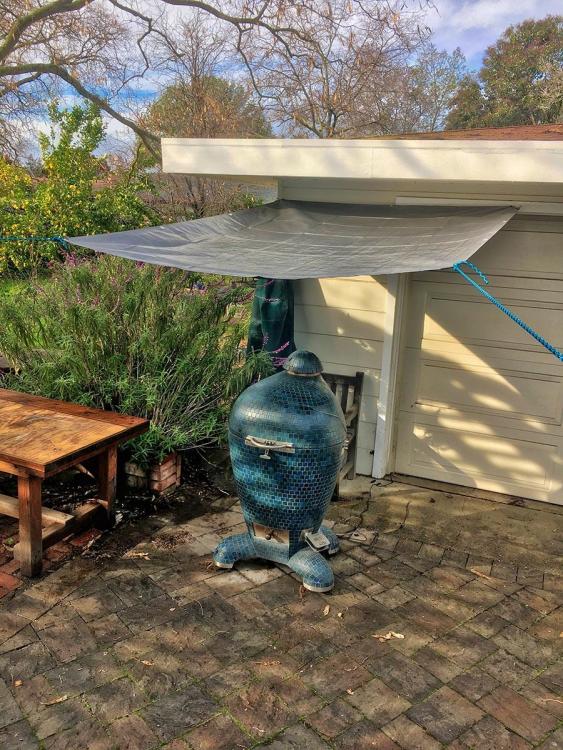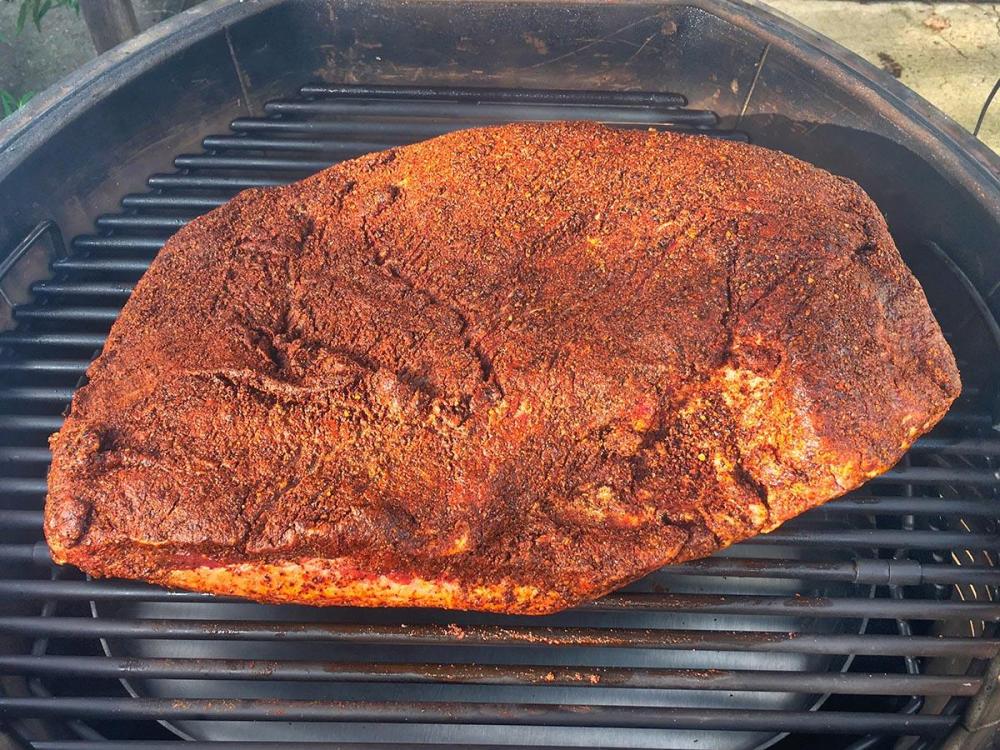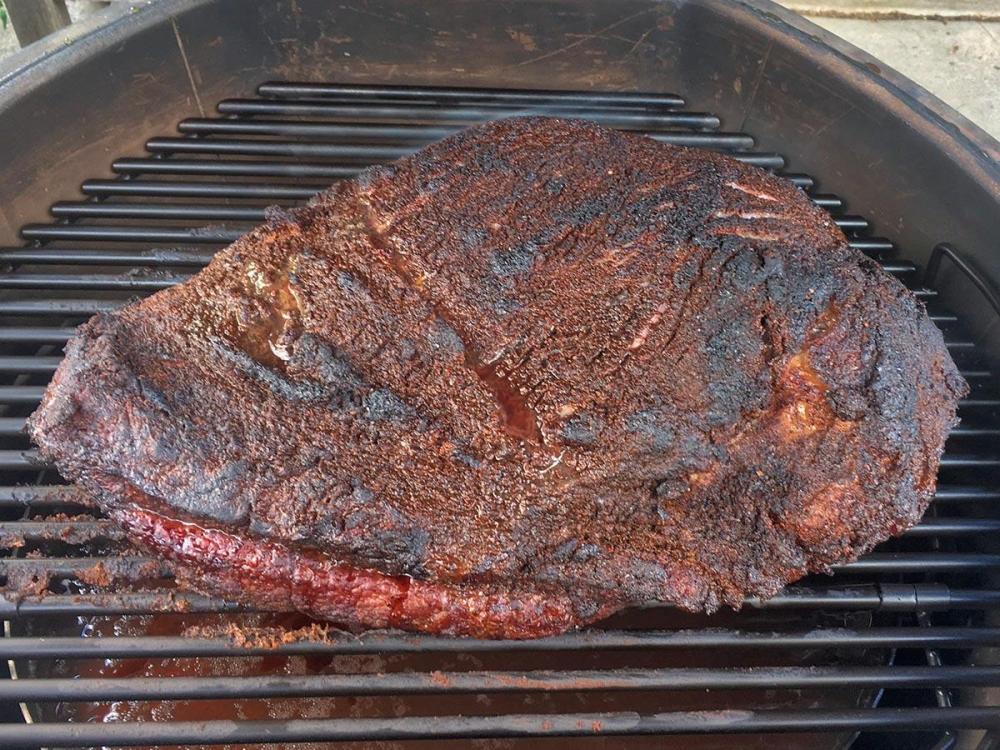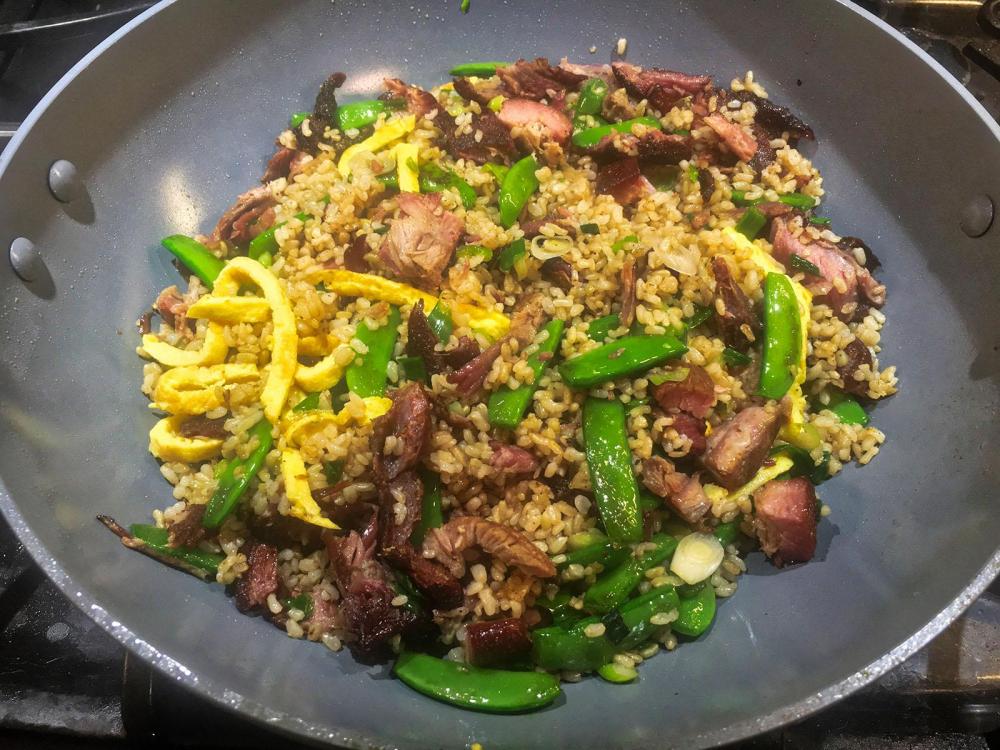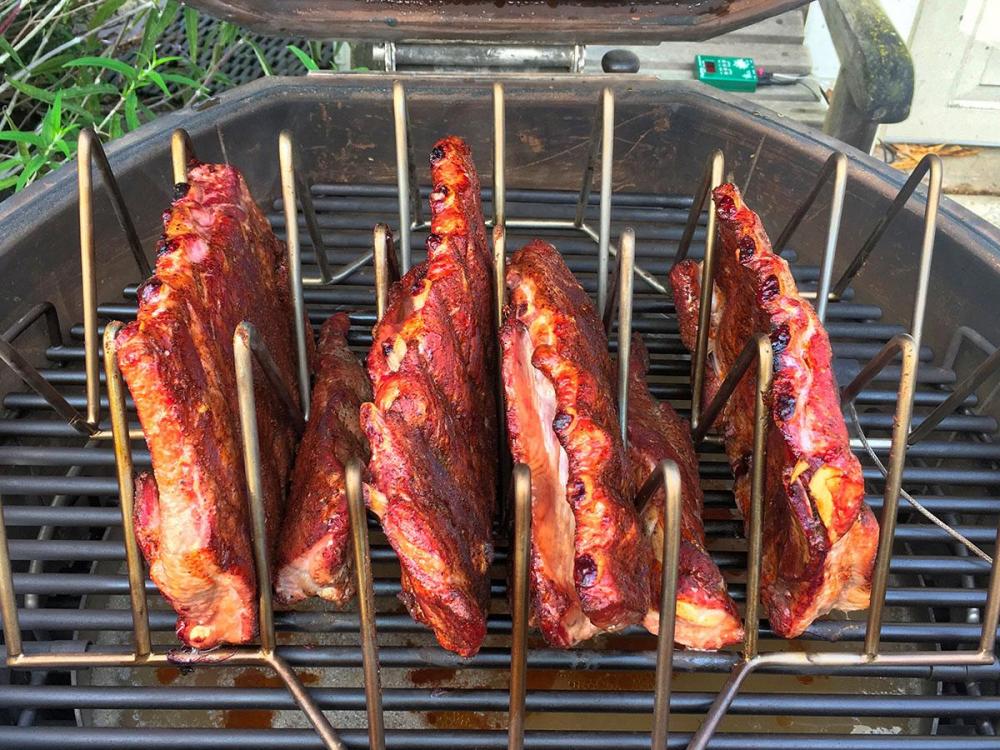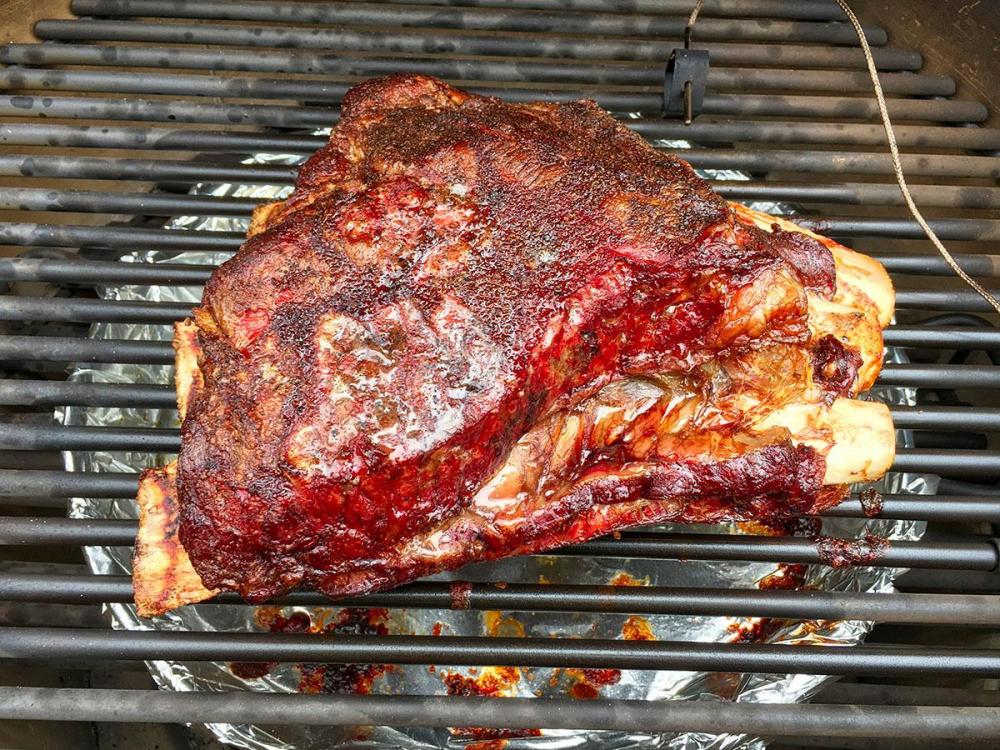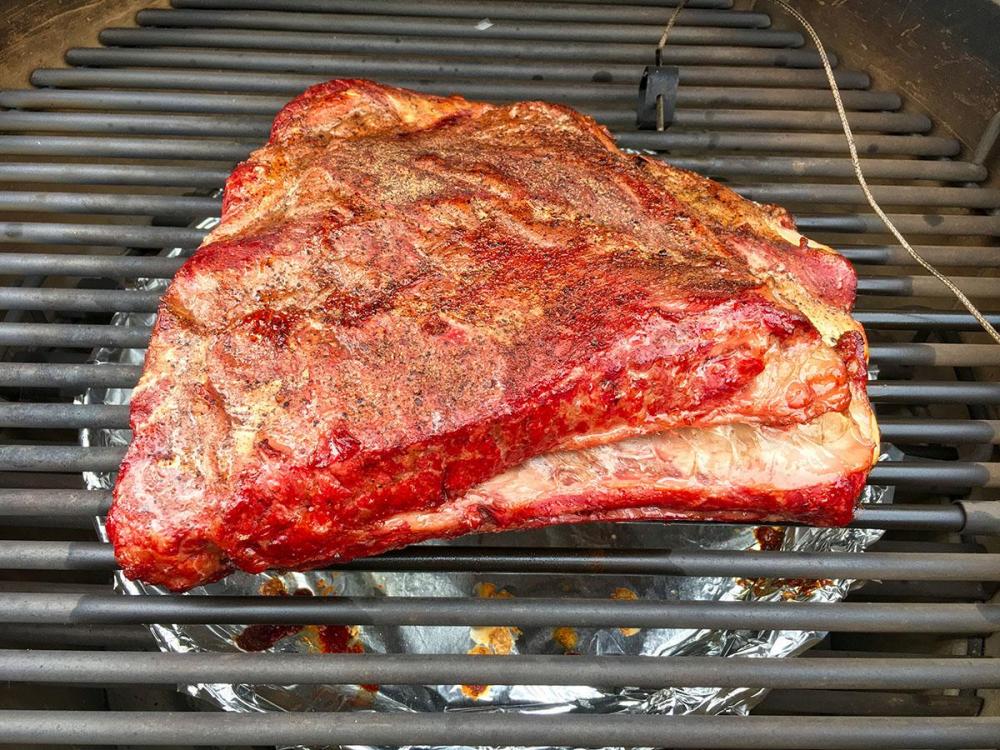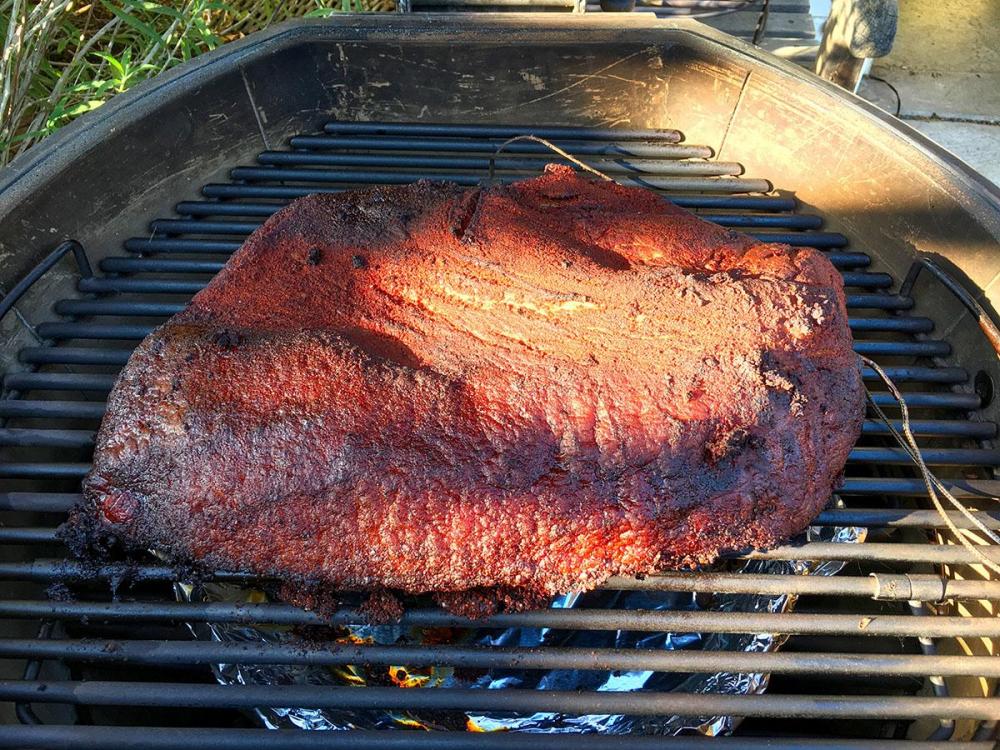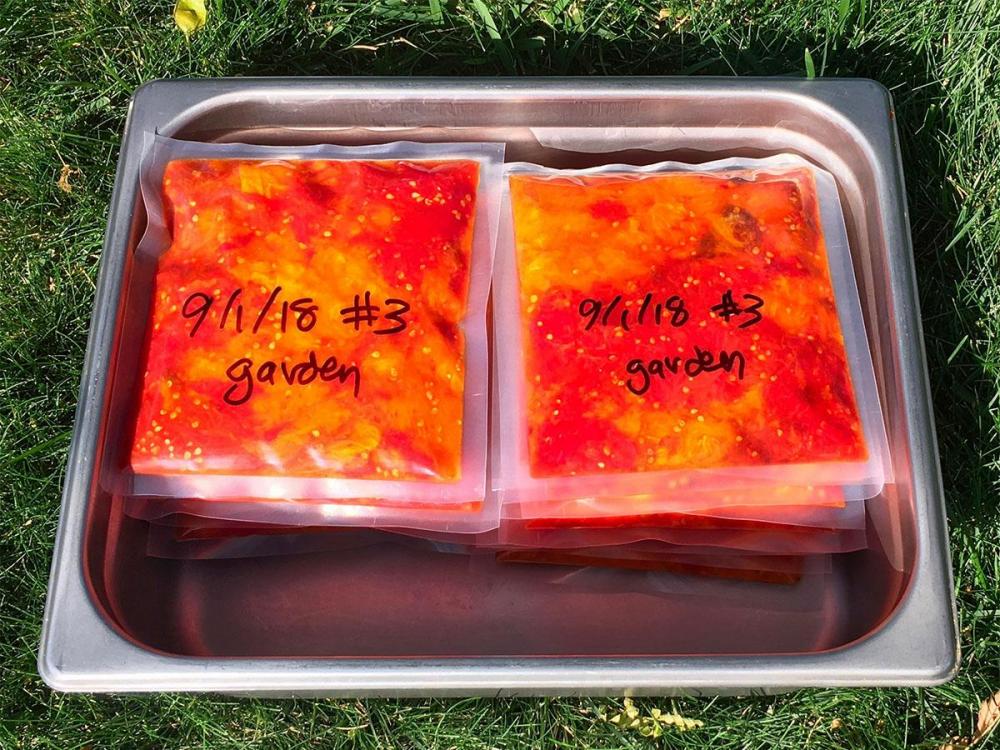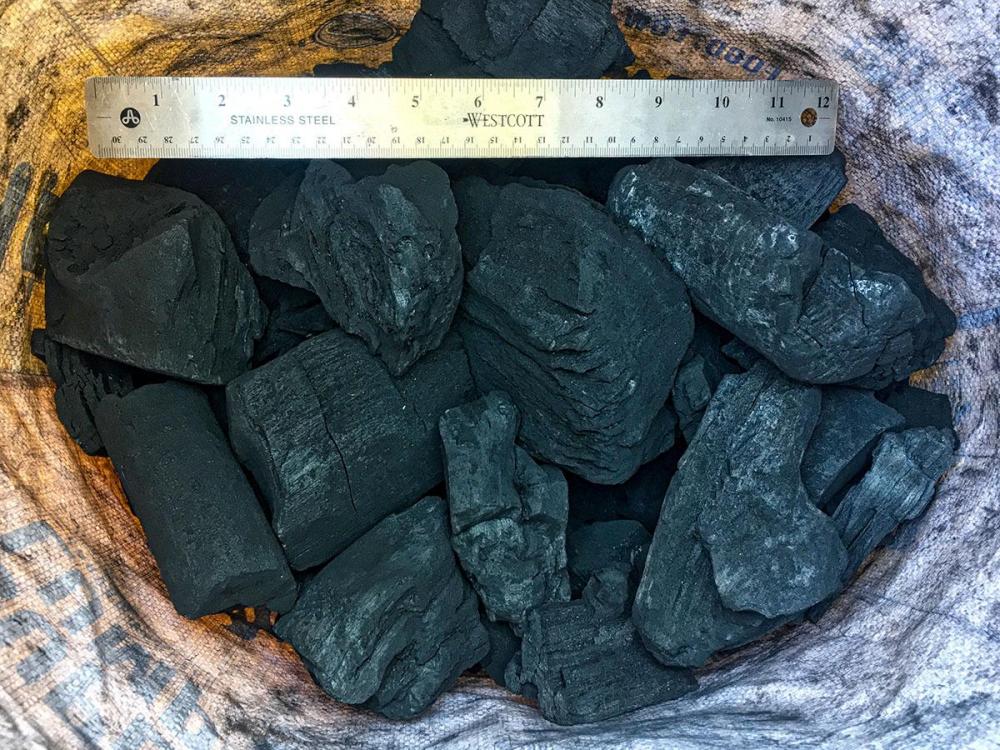-
Posts
1,739 -
Joined
-
Last visited
-
Days Won
53
Content Type
Profiles
Forums
Events
Everything posted by Syzygies
-
Heavy winds and rain expected, sun showers as I worked. Brisket tonight rain or shine, so I finally set up a tarp for my KK. I should have done this long ago.
-
Friends don't let friends equate Fogo with their house brand bags, then believe reviews that Rockwood is better. Fogo carries many charcoals, all with a cleaner flavor than Rockwood or Lazzari. In ascending order: Lazzari Hardwood Lump - meh, and half the bag is useless crumbs Rockwood - better, inferior to any Fogo charcoal, "dirtier" taste Fogo Cuban Marabu - hint of swimming pool but cleaner taste than Rockwood Fogo Super Premium - a favorite, large lumps don't bother me Fogo Argentinian Quebracho - my favorite Fogo Komodo Kamado Coffee Lump - best lump ever, not available The KK coffee convinced me that charcoal could be transcendent, worth any price, life is too short to compromise. Then I couldn't get more. Fogo is the only supplier that can approximate the same thrill for me. Get a basket splitter, to conserve on fuel, the splitter will pay for itself. Grilled fish with Moroccan red charmoula is spectacular over good charcoal. I order Fogo charcoal directly from Fogo. Free shipping, and it comes quickly.
-
-
-
-
Dennis got off his plane, and fixed the forum before going to bed.
-

Happy New year everyone hope it's a good one
Syzygies replied to Aussie Ora's topic in Jokes, Ribbin' & Misc Banter!
Such a difficult size. Too much for one, not enough for two... -
-
Beef short ribs, after two and four hours. I'm again following Austin Franklin's Franklin Barbecue: A Meat-Smoking Manifesto. Just as one has BBQ stalls, one has intellectual stalls. I had plateaued, in part struggling with the instabilities caused by an aging gasket. A new D-gasket made my KK run better than it ever had before, and I'm relearning how to cook from scratch, to break out of my stall. Of course, one never learns from scratch, but in my line of work one needs to stay in practice tearing down assumptions. Austin Franklin cooks beef ribs at 285 F in a 1,000 gallon propane tank converted to an offset firebox smoker. I'm finding that everything cooks faster in the KK, such as here: He predicted 8-9 hours, while I'm done and holding in under 6 hours. Same for my 10 hour brisket at 275 F; I'll try 8 hours next time.
-
I used to own a Richard #7 Kamado, and a friend owns a #5. I helped with stuck dampers on both cookers. If POSK is too blue for you, try BTK ("Boat Thief Kamado"). Everyone here was nice to me, and I ended up buying a 23" Ultimate nine years ago. Like moving from a rusted out crop duster to a Lear jet. I had to convince my wife to spend the $700 on the Richard BTK. She convinced me to buy the 23" Ultimate from Dennis. Yes, penetrating oil and a homemade strap wrench. Somehow you have to apply sufficient rotational force without hurting yourself. Once it's apart, find yourself a stainless steel bolt and nut of identical gauge. Then, completely rehabilitate both the existing nut and bolt, by repeatedly working the new, clean hardware up and down the old hardware. Use appropriate solvents to suit the problem. In particular, it is possible to work a nut further along the existing bolt than is possible with the damper itself attached. Cleaning further gives you a margin, so completely closing the top damper never reaches the remaining corrosion. With this hardware, you can clean annually, and avoid future problems. If anything goes wrong, you can make repairs yourself. Your cooker will of course lose any value as an authentic antique, because no one can find the same crappy materials that Richard used at the factory.
-
An electric pressure washer is a lot easier to set up than gas. It's the easiest way to clean grills post-brisket, getting all the gunk off but leaving seasoning, like a well-loved cast iron pan. One's hands don't get messy! Or perhaps pyromania tends to coexist with hydromania?
-
Also, dry the skin completely with a hair dryer.
-
Yes, I put in what I need, guessing high not low.
-
No, control the oxygen, control the fire. One gets a feel for how much fuel to use, but one can light the fuel everywhere and still hold at 450 F. I can even use a BBQ Guru to hold a fire at 450 F, with their Pit Bull (Large) Fan. The key is to run the pit probe through the dome hole where the Tel-Tru thermometer usually goes, to avoid exposing the wire to excess heat. This is convenient if I'm too busy to watch the fire. Holding 450 F is also pretty easy manually.
-
Extruded coconut lump burns so clean that one can bake a sour cherry pie. Hard to obtain in recent times. I routinely bake bread in my 23" KK. I get the entire batch of coals lit at once, and try to time the fire so one is coasting at 450 F for the 30 minutes or so I'm actually baking. The KK retains heat amazingly well, but opening it to add cold bread dough, then adding water for steam, draws away a lot of heat. Ideally, my fire is ready for its last hurrah to get back up to cruising altitude one last time. I've got my bread's final rise down like clockwork, making this easier. Cooking dinner, I never control the timing of everything at once quite as well, so the fire needs to be flexible. In general, for higher temperature roasting, I like the results best if the fire is nearly spent, in its "red star" waning phase, with lots of stored heat in the KK walls. This is of course tricky to time, depending on what else is going on.
-
Wonderful to have a working gasket again, see smoke curling out the top as it should, see the Guru stay locked on to the nearest degree. A cold morning, and I want a stronger smoke profile, for 50 people sampling brisket along with lots of other food. So I give my two quart smoke pot (filled with hickory chips) a turbo start on my Solo Stove Campfire. Or perhaps I just like starting fires.
-
I love Einkorn. It fits into my "guest" regime: 10% nicely enhances flavor with no downside. 20% starts to make a noticeable change in handling. Not necessarily adverse, but something to learn by experience to correct.
-
Some people have trouble with reduced rise, using freshly ground flour. This problem is poorly understood by most writers, but understood by professionals. The issue is "green flour"; flour needs to age, but we want to grind fresh and not have the germ go rancid. Michel Suas has the most complete answer: Add 30 to 40 parts per million ascorbic acid. How? Mix AA 1:20 with white flour, sieve multiple times to mix completely, then mix some of that mixture 1:20 with white flour. One now has a 1:440 blend one can measure with a gram scale. This solved all sorts of problems for me. I also found rather noticeable variation in different sources of whole grains. Keep notes, and be sure to experiment. The flavor of adding a "guest grain" in moderation can also be a remarkable change. We don't drink the same wine all the time? Variation in bread grain is also good.
-
No harder than grinding coffee, with the right equipment (such as this mill). We'd all be milling flour if there was a drug in it somewhere.
-

Indiegogo new conical burr coffee grinder
Syzygies replied to DennisLinkletter's topic in Komodo General
I'm pretty happy with my Pharos manual coffee grinder. One gets the burrs in a much more expensive electric grinder, without the motor. And the whole kickstarter thing: One gets excited over untested products. Sounds too much like dating to me. -
Here is a blower that several of us use (I already have their battery system for other tools): Milwaukee M18 Blower Kit I'm not that far off on most physical intuitions, but I was surprised by this: Once a fire is started, a minute with a blower is far more effective than another minute with a MAPP torch.
-
The warehouse by SFO? I love how "Mad Max" that bombed out building looks. Hey, they manage to keep the charcoal dry. Mesquite is indeed popular in the west. My wife finds its use completely discrediting, discussing friends' charcoal tastes. I used to buy the Lazzari oak lump. Acceptable flavor; the coffee charcoal from Dennis was night and day better, we were prepared to ignore the expense and just buy a pallet. Then he couldn't ship it. I pick up off notes in the Lazzari oak lump even for 500F chicken, though I'd use it for pizza. Dirtier than the #1 Rockford. Poor quality size distribution, I'd waste enough of each bag that I considered saving the crumble to make a return once I filled an entire bag. Never did. FOGO is free shipping. See if you can tell the difference? People drink more than one wine; stock more than one charcoal.
-

Why are we not talking about this?
Syzygies replied to Chanly1983's topic in KK Features & Accessories
I don't make wine. I've had homebrewed beer that was better than bought, but they took over a garage with $10k of gear, and got too busy. I make fermented hot sauce, because it's better than I can buy. We freeze skinned, salted, and partially dried garden tomatoes, and make Sicilian estrattu from Santa Cruz dry-farmed Early Girl tomatoes, because they taste better than any bought or home canned tomatoes, period. I've tried roasting coffee beans. The ideal process involves equipment I don't have room for, that costs more than I make in a year: Graffeo Coffee - Our Process. As I've gotten older, I equate lesser home efforts with praising Johnny's Kindergarten art, if one can simply buy better. We nevertheless have open minds. Tell us it's better than anything you can buy, in a double-blind tasting? -
This picture of #4 is a bit unfair, because I picked out all the smaller pieces sitting in between and above, for an application where it didn’t matter so much. I like having big pieces in reserve. These are as big as they get.
-
Rockwood Premium All-Natural Lump Charcoal Fogo Marabu Hardwood Lump Charcoal 33-pound Bag (Cuba) Fogo Argentinean Quebracho Blend 35-pound Hardwood Lump Charcoal Bag (Argentina) Fogo 35-pound Super Premium Hardwood Lump Charcoal After the coffee lump charcoal from Dennis became unavailable, I've tried the above four premium lump charcoals. #4 is the clear winner for me. Large pieces, easiest to light (weed burner then Milwaukee M18 FUEL Blower), fewest sparks. Not as dense as #2 or #3. Best of all, #4 has our favorite flavor. Subtle but distinct. In the last few nights, we've had both cod and pork chops in Moroccan red chermoula, both times leaving us in tears wanting more. I grill on the lower grate, using the basket splitter which will surely pay for itself in premium charcoal savings. To be sure, we each have different smoke preferences. I devised the Dutch oven smoke pot many years ago; we're pretty sensitive to off flavors. I can swear that I pick up faint notes of chlorine in #2, less so in #3, but I'm alone here. #2 and #3 are also rather sparky, though I'd put up with this if I loved their flavors. #1 is dirtier / more flavor, depending on your perspective. A friend loves it; he's a great cook but I believe that his Weber work has too many off flavors from out-of-control combustion byproducts.


